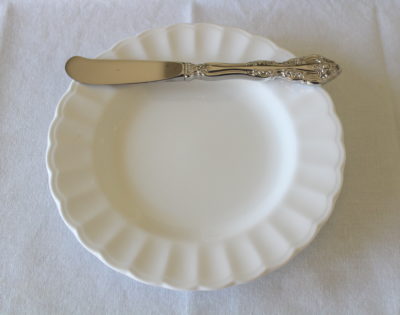
Butter knives are not all cut from the same cloth! There are master butter knives, sometimes called table butter knives or just butter knives, which are to be shared by those at the table and are passed with the butter. Then there are butter spreaders which each diner will on have his or her own bread and butter plate.
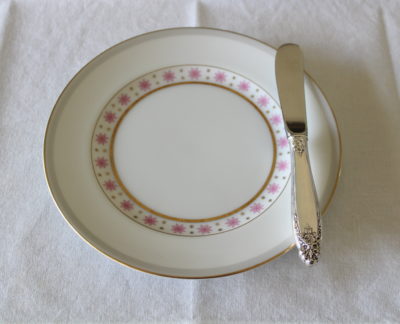
As with most silverware patterns, it may be difficult to tell which small knife is intended for what purpose. There is no categorical answer other than to say that the master butter knives tend to have points at the end whereas butter spreaders tend to have a rounded tips. Think of it this way…a pointed tip used to spread butter on a roll or piece of bread would probably get caught in the bread. The round tip aids in spreading the butter without such impediment.
If unsure of your patterns’ butter spreaders and butter knives, you may need to refer to a product chart for your flatware to see which is which. Replacements.com is good for assisting with this delineation, either by perusing their site or by calling or emailing their identification team. Of course, not all patterns offer both types of butter implements.
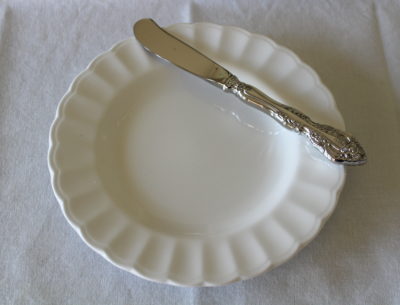
For my every day flatware, Michelangelo by Oneida, here is what the master knife vs the spreader look like:
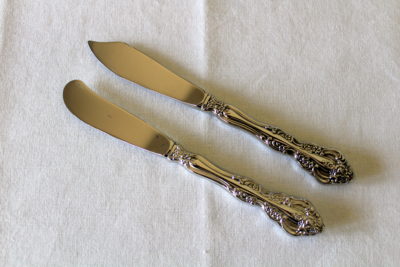
For my mom’s pattern of silverware, Prelude by International Sterling, here is the difference:
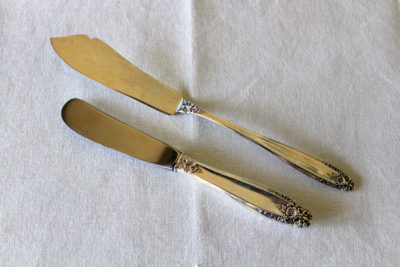
I recently went looking to purchase additional butter spreaders for my stainless pattern. I thought it was odd that I could buy sterling spreaders cheaper than I could buy stainless spreaders! I purchased several spreaders that matched my mom’s silverware pattern and decided they would have to do double duty!
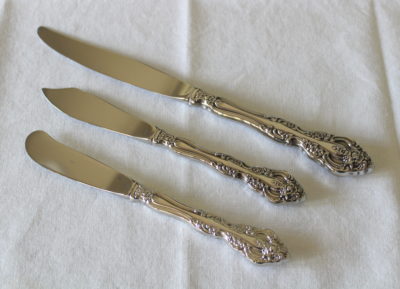
Butter knives and butter spreaders are typically the smaller knives in a set. Their blades are dull (who needs a sharp blade to get through butter?), and they are typically 6-7″ in length.
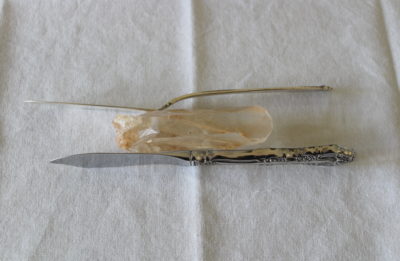
You may see a distinction between a hollow handle butter knife and a flat butter knife or a hollow handle butter spreader and a flat handle butter spreader. This does not change the functionality of the knives/spreaders, but rather refers to the design of the handle: flat versus thick (and hollow).
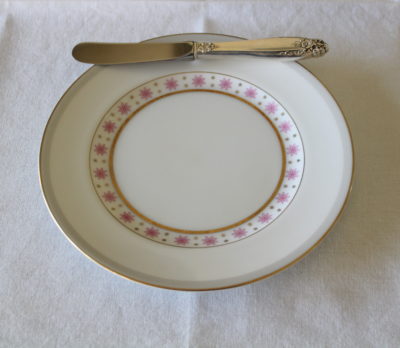
I wonder if Paula Deen, the queen of butter, knows this much about table service of butter?
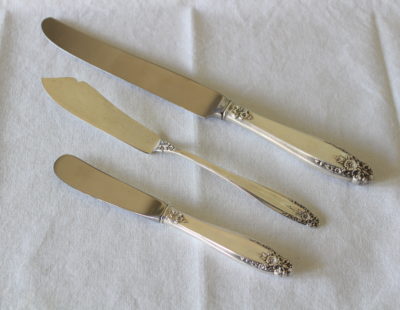
Bonus Information: The bread plate, also known as a bread and butter plate, is the small plate located to the left of the dinner plate in the 10 or 11 o’clock position. The bread plate is 5-6” in diameter. Less common, and smaller with about a 3-4” diameter is the butter pat plate. This plate is used solely for butter.
